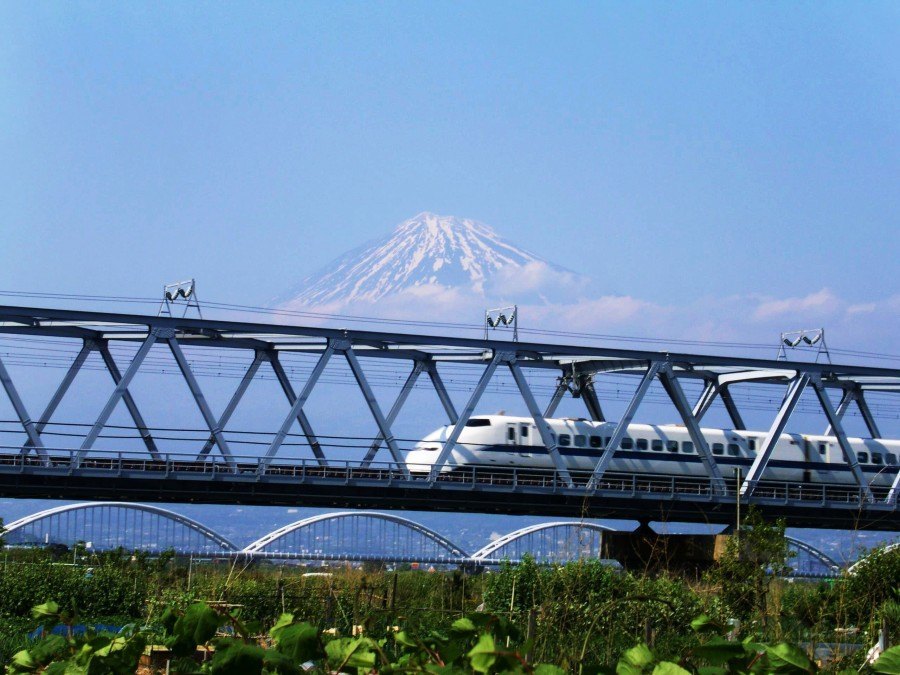Like this post? Help us by sharing it!
They’ve been clocked at up to 200 miles per hour, their tracks cover about 1,500 miles of the country and they safely and reliably transport hundreds of millions of passengers each year around Japan. The Shinkansen is better known simply as the ‘bullet train’, (a nickname it gets from its bullet-shape nose and fast speeds) was launched for the Tokyo Olympics way back in October 1964. In 2014, the Shinkansen will be 50!
Things have changed a bit over the last 50 years. The original 320 mile stretch of track from Tokyo to Osaka now extends across mainland Honshu to Kyushu. The original 0 Series train travelled at 210kph, which was considerably faster than the steam trains that were still in service in the UK in 1964, but now travels at speeds of up to 200mph. The ‘bullet train’ has also changed appearance over the years with the classic 0 series spawning all sorts of super sleek train designs.
[youtube=http://www.youtube.com/watch?v=EQF8niTexPc]
The o series has given way to the N700 series on the Tokaido line with the 800 series running all the way down to Kagoshima on Kyushu island. The Joetsu Shinkansen lines in Nagano have the impressive double-decker E2 and E4 series MAX (Multi Amenity eXpress) trains and the Tokoku line to the far north has the very impressive looking green E5 ‘Hayabusa’ and the more recent E6 ‘Komachi’. Whether you like trains or not, you cannot fail to be impressed with the Shinkansen.
[youtube=http://www.youtube.com/watch?v=4cOxk7TPop4&feature=c4-overview-vl&list=PLYDqhXk953nu-Jv1-lebh3215j0d9uZia]
Here are a few points about using the bullet train in Japan –
- They run on a tight schedule. If you’re planning to take the train, be on time. Japanese bullet trains are rarely late and often run within a minute of the planned arrival and departure times.
- No language barriers: Signs in terminals and on the trains are typically in both English and Japanese, so there’s no language barrier to worry about.
- Buy a rail pass: One-way tickets aren’t cheap, but a rail pass can save you big bucks wherever it is that you’re going.
- They are very spacious, comfortable and a delight to ride.
- Standard class is considerably better than standard class in the UK or US.
- The ‘Green class’ or first class has a different seat configuration meaning more room for passengers along with a blanket and newspaper.
- Like the rest of Japan, service on the Shinkansen is first class as standard and ‘Bento Box’ meals are served by well dressed staff.
If you travel to Japan, the chances are that you will ride one of these beautifully engineered carriages to one of your destinations. However, to celebrate the 50th anniversary of the Shinkansen, we thought we would develop a trip travelling from north to south around Japan, touching on every Shinkansen track across the country, sampling several different styles of this wonderful train and a whole host of cultural experiences. We have designed the 15 night ’50 years of the Shinkansen: Bullet trains and temples’ bullet train bonanza. The trip retraces the original journey from 1964, takes a sand bath in the shadow of the puffing Sakurajima Volcano in Kagoshima, the Shinkansen depot in Fukuoka via Kumamoto castle, stays in Buddhist temple lodgings in the Japanese Alps, stops in a samurai town in the north of Japan and visits the new Maglev Museum in Nagoya to name just a few of the experiences.
Why not gallop along on the Shinkansen in 2014 – the Year of the Horse. You might say that you “are not into trains”, but you will be after a visit to Japan.
For more information on riding Japanese bullet trains, contact Inside Japan Tours.



